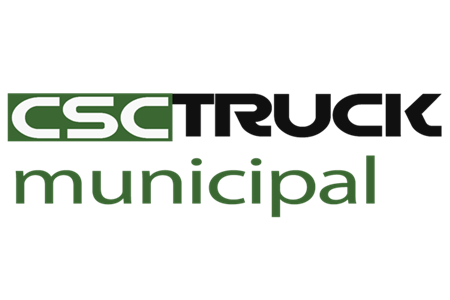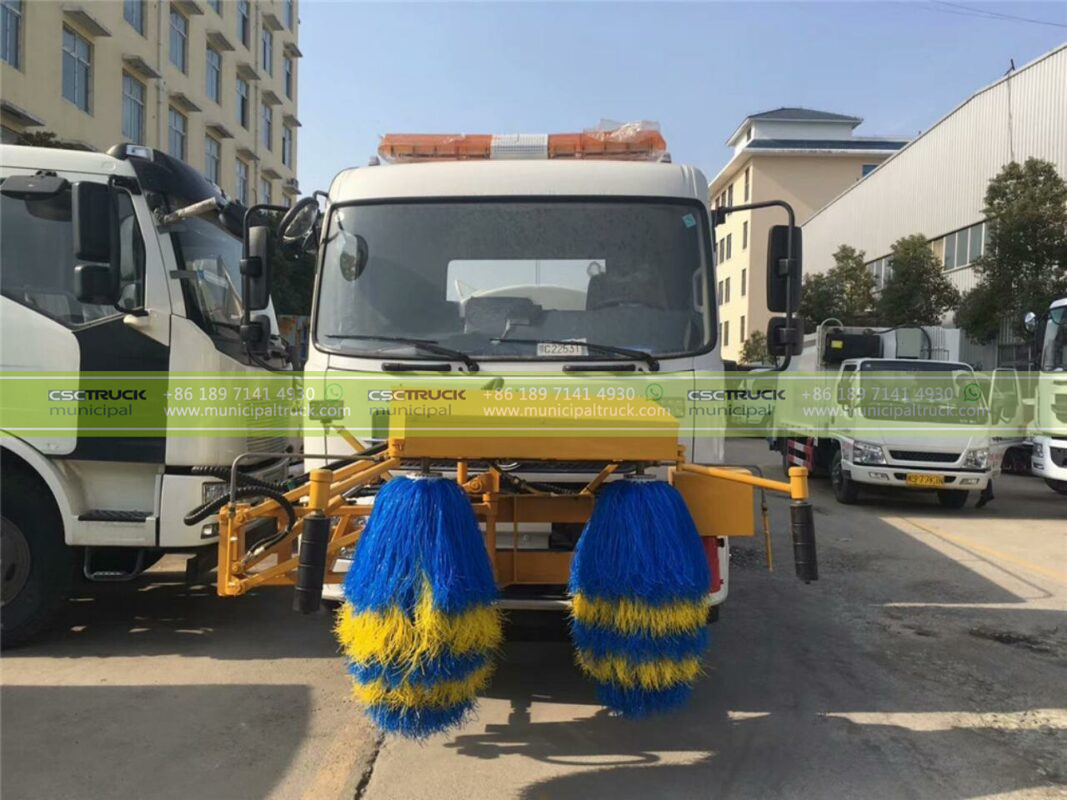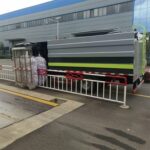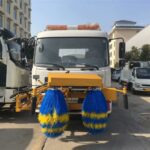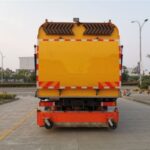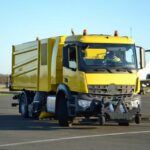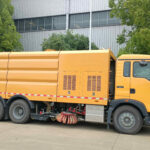Kenya Airports Authority (KAA) has significantly enhanced critical airside safety and biosecurity protocols with the operational deployment of a fleet of advanced fence sweeper trucks across major aviation hubs, including Jomo Kenyatta International Airport (JKIA) and Moi International Airport, Mombasa. This strategic initiative, delivered under a landmark contract between Municipaltruck.com, the global leader in specialized municipal and airside maintenance solutions, and Kenyan Integrated Infrastructure Solutions (KIIS), a premier local engineering and facilities management conglomerate, marks a transformative step in mitigating wildlife hazards, controlling invasive plant species, and eliminating debris accumulation along vast airport perimeter fences – critical factors directly impacting aviation safety, operational continuity, and international phytosanitary compliance within East Africa’s premier aviation gateway.
Engineered Precision for Demanding Airside Environments
Maintaining impeccable hygiene and clear sightlines along extensive perimeter fencing in Kenya’s diverse climatic zones – ranging from Nairobi’s highlands to Mombasa’s humid coastal plain – presents unique challenges, including rapid vegetation regrowth, seasonal dust storms, persistent litter, and persistent wildlife attractants. The custom-designed fence sweeper trucks supplied by Municipaltruck.com incorporate robust regenerative air systems and articulated mechanical brooms engineered explicitly for this high-stakes application, featuring critical technological advancements:
- High-Precision Debris Clearance & Vegetation Control: Utilizing articulated, laterally extending boom-mounted brooms combined with high-velocity suction nozzles, the trucks effectively clear grass cuttings, invasive creepers, wind-blown litter (especially plastic bags posing severe wildlife ingestion risks), and accumulated soil/silt right up to the fence base without damaging critical security infrastructure or buried sensors, crucially eliminating cover and food sources that attract hazardous wildlife like birds and mammals near active runways.
- Enhanced Containment & Airborne Particle Suppression: Sophisticated multi-stage HEPA filtration systems integrated within the closed-loop vacuum circuits capture over 99% of fine particulate matter, including potentially hazardous dusts and allergens, while precisely calibrated water misting systems suppress dust during dry season operations, preventing visibility-reducing plumes and minimizing potential contamination of sensitive navigational equipment located near perimeter areas.
- Intelligent Terrain Adaptation & Operator Safety: Advanced hydraulic leveling systems ensure optimal broom-to-ground contact and suction efficiency on uneven terrain adjacent to fences, while integrated obstacle detection sensors and reinforced operator cabins provide enhanced safety when working near security infrastructure and in potentially remote airside locations; real-time telematics feed performance data and location tracking to central KAA and KIIS operations centers for coordinated security oversight.
Integrated Deployment Strategy for Comprehensive Perimeter Security
The operational deployment focuses on establishing a rigorous, preventative maintenance regime tailored to the specific biosecurity and safety risks inherent to each airport’s geographical and ecological context. Operations are meticulously scheduled outside peak flight windows and coordinated closely with air traffic control to ensure zero disruption to flight schedules. Key facets of the implementation include:
- High-Frequency Critical Zone Sweeping: Primary focus areas encompass runway and taxiway proximity zones identified as high-risk for wildlife activity, where sweeper trucks operate on intensive, near-daily cycles to remove fresh vegetation growth and food waste before it attracts fauna; secondary zones covering the full perimeter length undergo systematic rotational sweeping to prevent encroachment.
- Targeted Biosecurity Protocols: Deployment includes specialized programs for mitigating specific threats, such as clearing tall grasses providing rodent harborage before the rainy season, removing fruiting plants attracting birds during ripening periods, and eliminating wind-blown debris fields after storms that could compromise fence integrity or sensor functionality.
- Synergy with Ecological Management: The sweeper fleet operates as an integral component of KAA’s broader Wildlife Hazard Management Plan and phytosanitary strategy, complementing habitat modification efforts, bird radar systems, and manual inspection teams by providing the essential mechanical means to rapidly and consistently eliminate physical attractants and maintain clear buffer zones essential for visual monitoring and electronic countermeasures.
Partnership Model Delivering Sustainable Airside Safety
The successful deployment and immediate operational impact of the fence sweeper truck fleet underscore the efficacy of the collaboration between Municipaltruck.com and Kenyan Integrated Infrastructure Solutions (KIIS). Municipaltruck.com provided not only the technologically advanced, application-specific vehicles but also comprehensive competency-based operator training focused on airside safety regulations, advanced system diagnostics, and efficient debris management techniques, alongside establishing a dedicated local spare parts depot and technical hotline for KIIS maintenance crews. KIIS, leveraging its deep national presence, extensive experience managing critical Kenyan infrastructure, and established relationships with KAA regulatory bodies, ensured seamless integration into airport operational protocols, provided vital local environmental expertise to tailor sweeping regimes, recruited and managed highly skilled operators adept at navigating complex airside environments, and implemented the rigorous safety management systems required for operations near active flight paths. This synergistic partnership, blending globally engineered sweeper truck excellence with unparalleled local operational execution capability – further enhanced by coordinated deployments with KIIS’s existing sprinkler truck fleet for pre-emptive dust suppression on unpaved service roads adjoining perimeters – delivers a demonstrably higher standard of perimeter hygiene and biosecurity resilience, directly contributing to Kenya’s reputation for safe, efficient, and environmentally responsible aviation infrastructure management across its vital international gateway airports.
